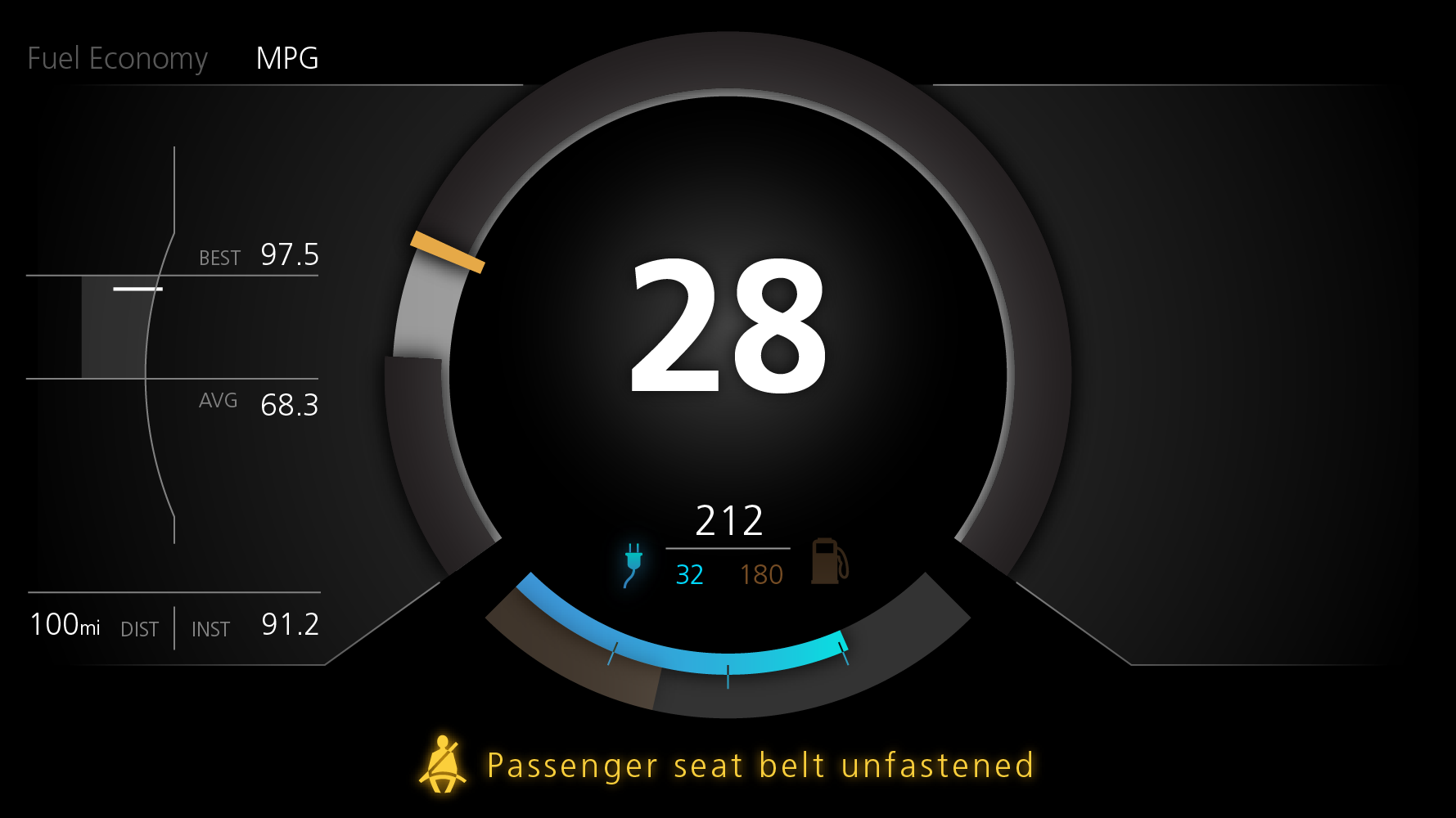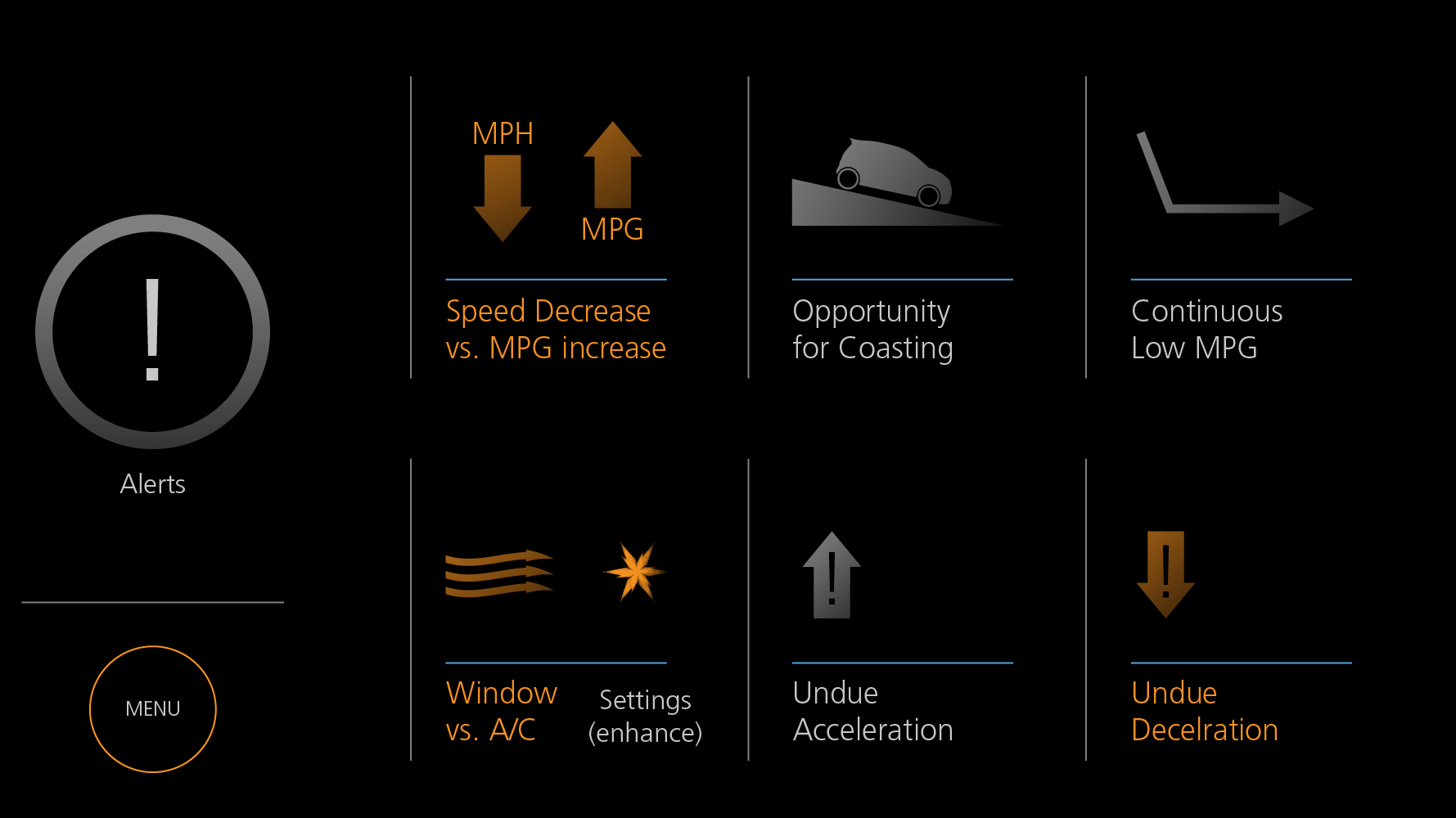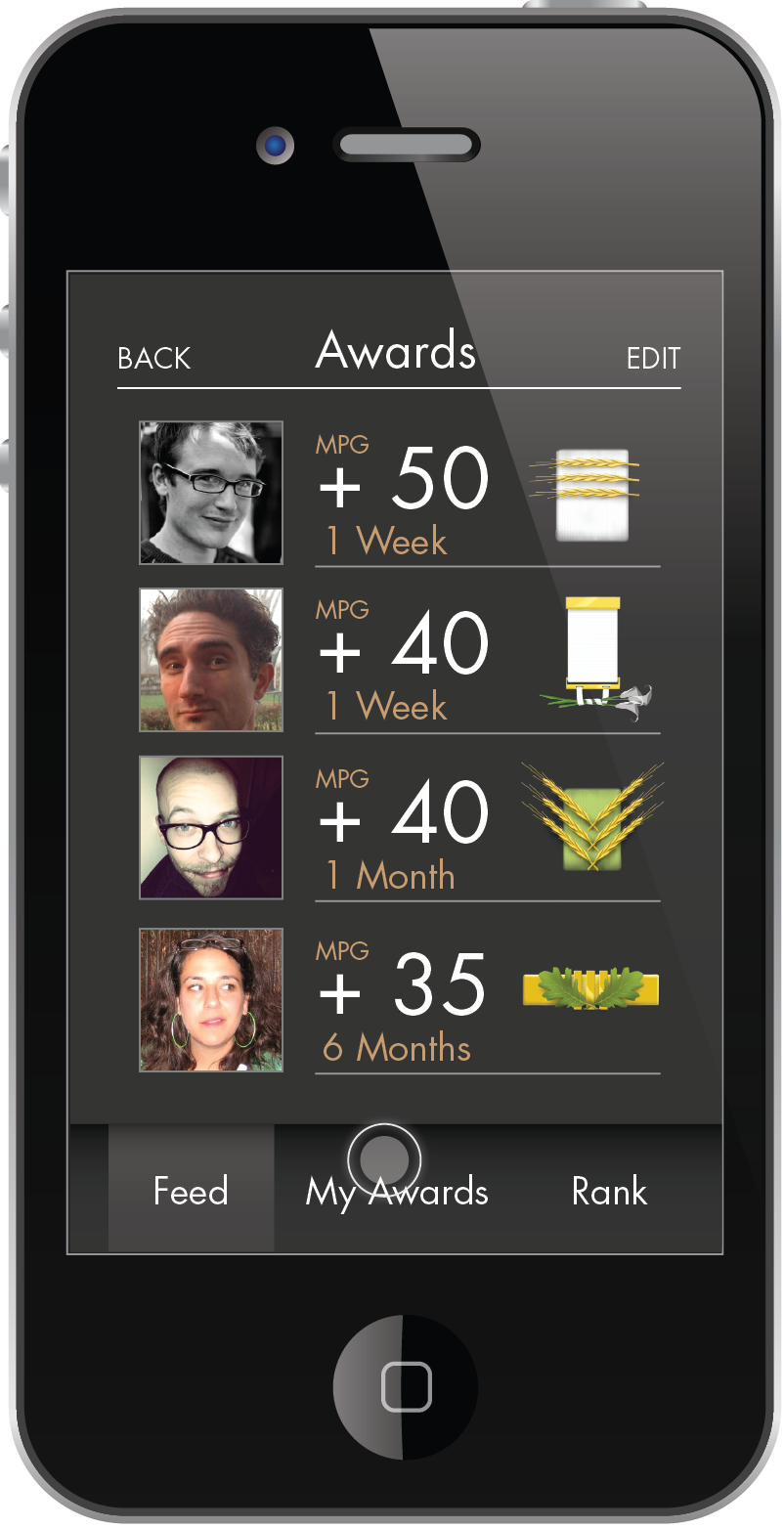This project, done during my employment at General Motors, was an exploration of the intersection of efficient driving and persuasive design. The goal was to create an interaction scheme for the Chevy Volt that would be easy, pleasurable, and safe to use while at the same time raising the driver’s efficiency ever higher.
The design decisions, intentions and goals of the project were based on 3 months of field research, synthesis and analysis. The research was centered around contextual inquiry conducted in San Francisco and Chicago. Many hours were spent by myself and my fellows, in vehicles with normal people; observing, questioning and generally trying to understand the motivations of both highly efficient and completely average drivers.
The concept is broken into three sections, based on the location of the interaction: Primary (a display directly in front of the driver that replaces the traditional cluster), Secondary (a display in the center of the vehicle) and Tertiary (a mobile device). Designed to function as a whole to attain greater gains than any element could on it’s own. Each of these interfaces offers the driver information in different ways; helping, informing, persuading and moving from simple to complex as the user gets farther and farther from the primary driving task.
The primary display’s efficiency/speedometer has even been patented.
Try out an interactive prototype of the primary display here.
If you’d like to know more about this project, please feel free to read this .pdf.























